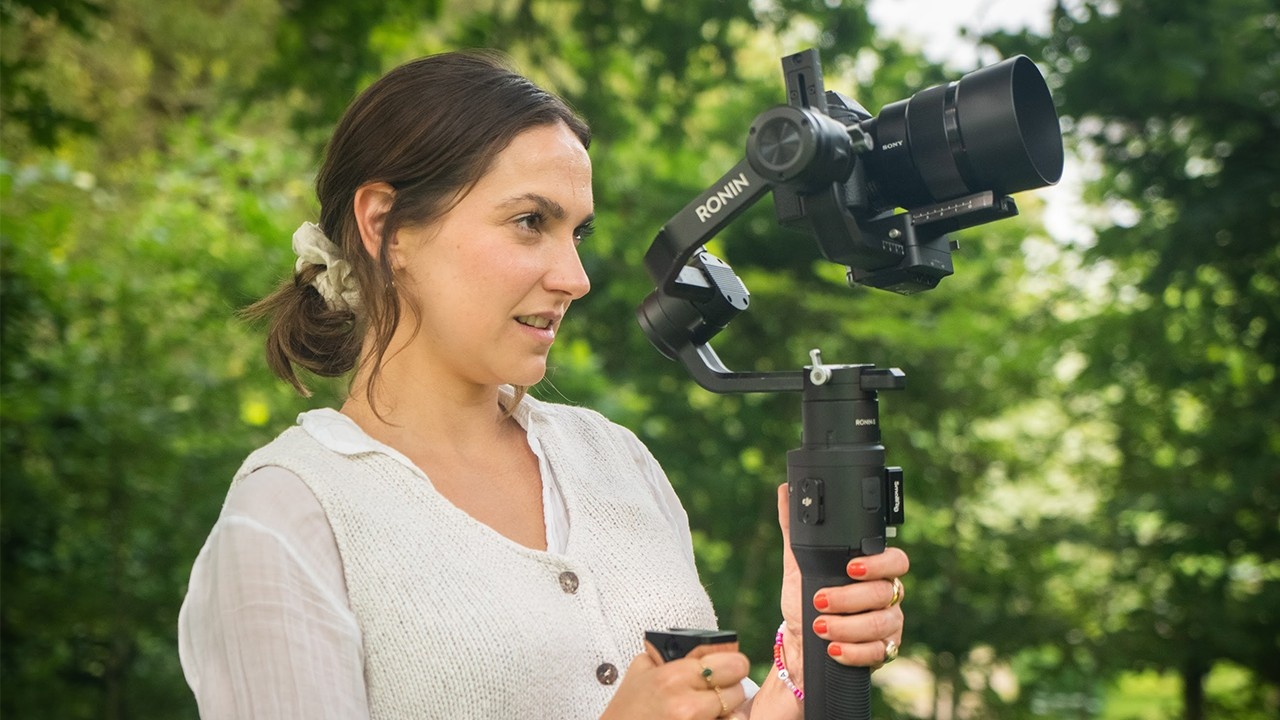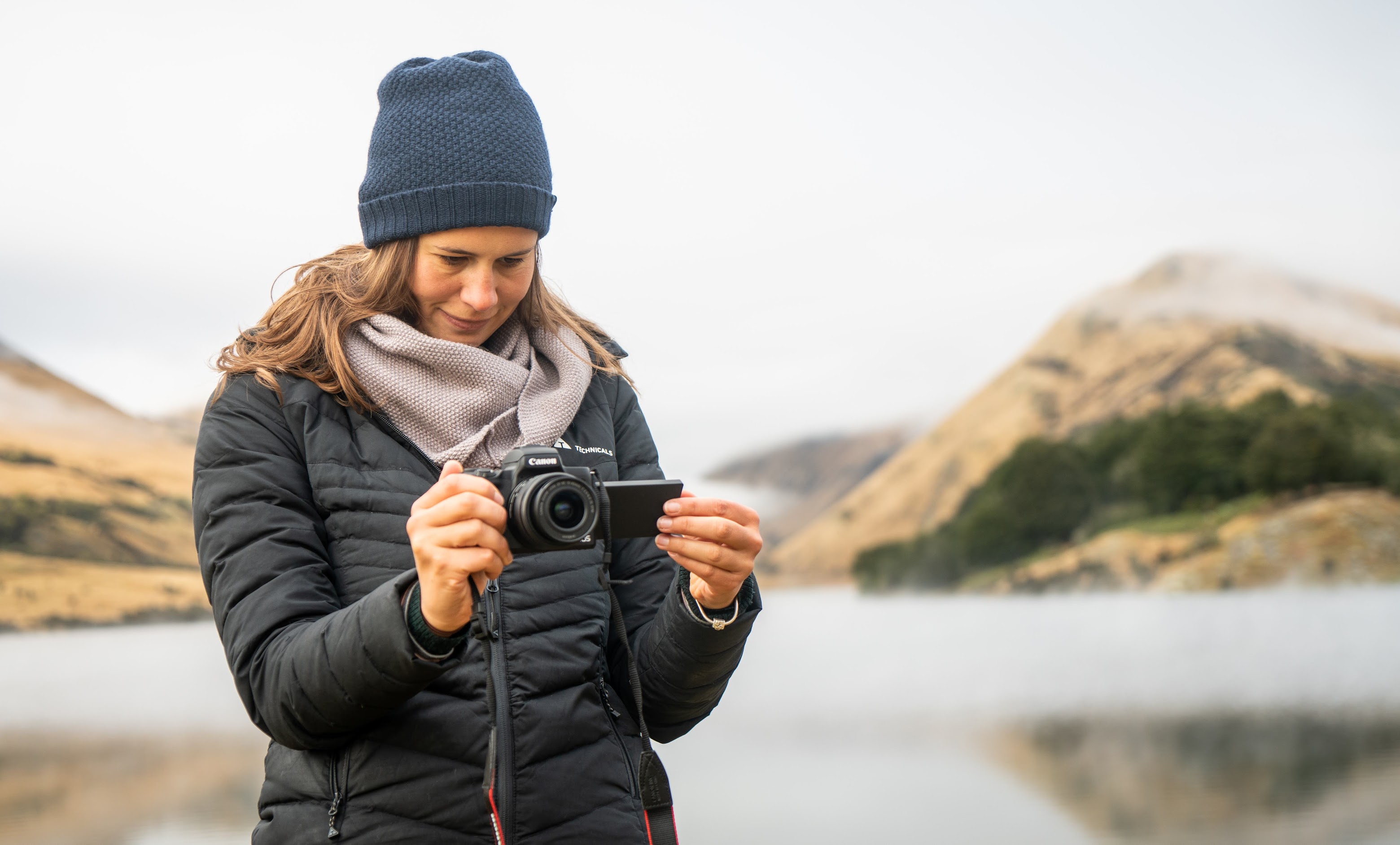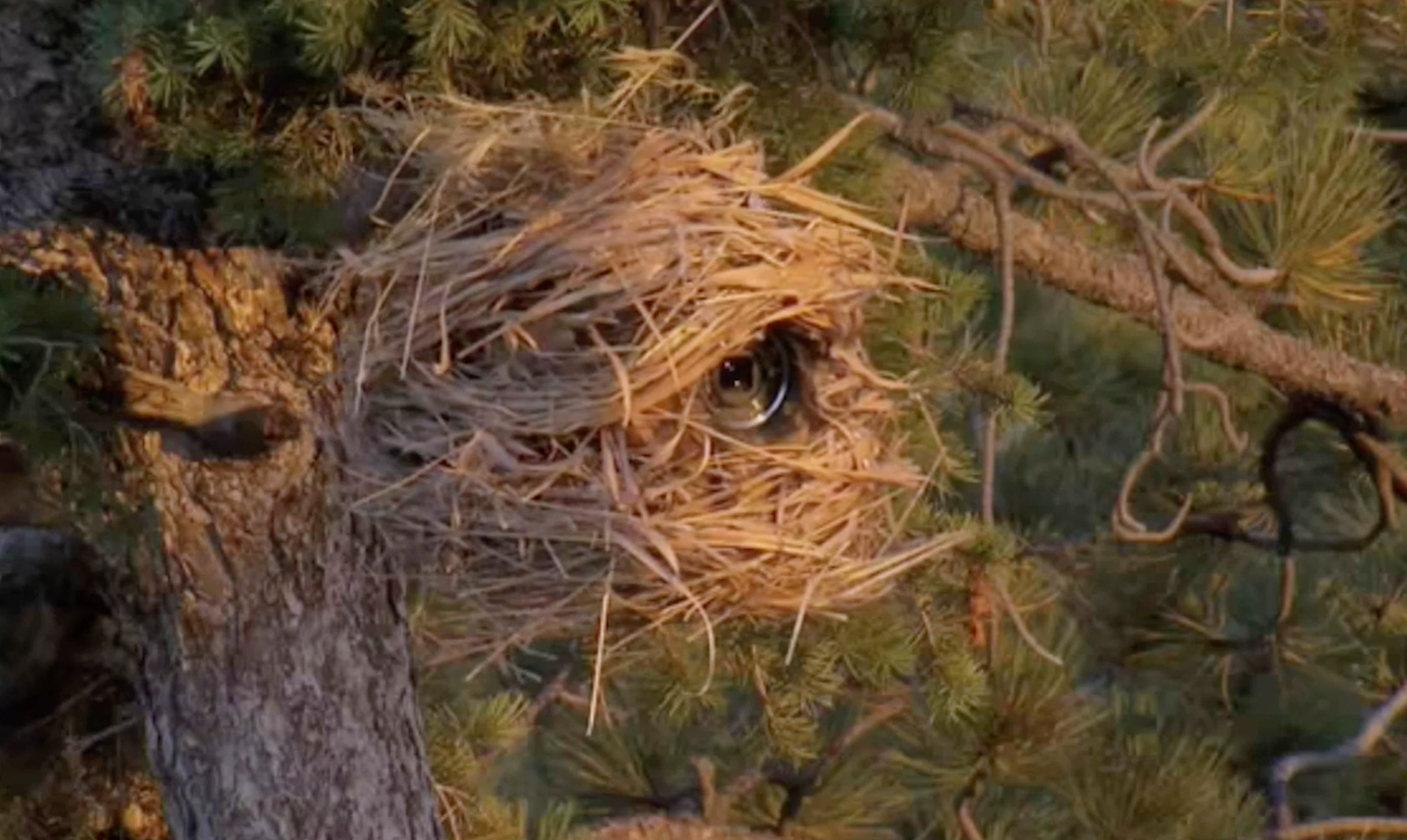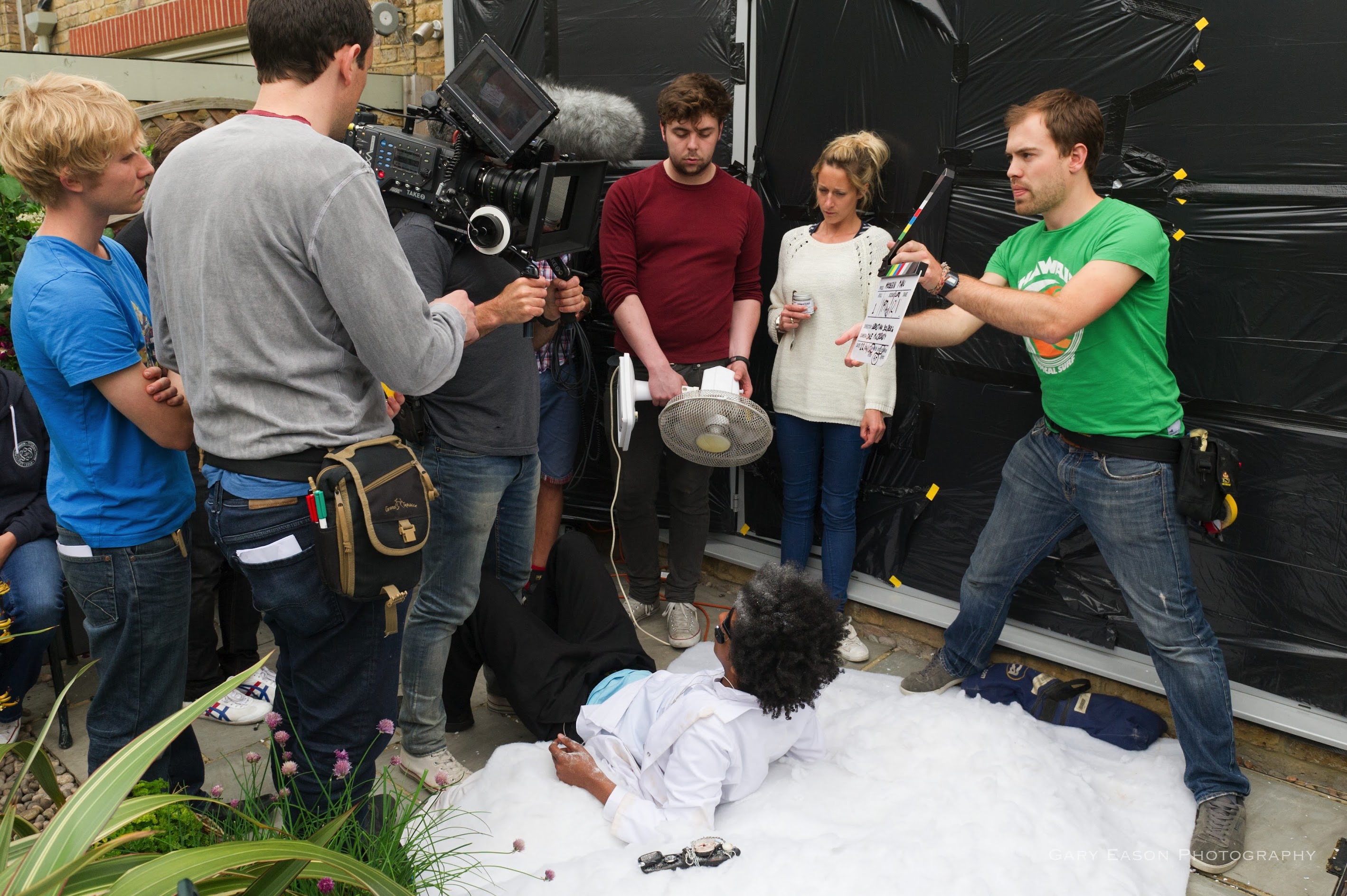10 Powerful Documentary Visual Storytelling Techniques

As documentary filmmakers, we’re in a visual medium, so our goal is to show, not tell. If the story was just told to the audience through dialogue, voice-over and text, it wouldn’t be as emotionally engaging and gripping as it could be.
This is a mistake I see a lot of beginner filmmakers make.
They tell the audience how they should feel, rather than getting them emotionally invested in the story.
This is also a mistake I made in one of my first short films where I was worried that the audience wouldn’t feel the way I wanted them to, so in the middle of the film I used text to describe what was going on and how the characters felt.
As a result, this made the audience feel less engaged with the characters as I was telling the audience what was going on, rather than showing them.
What is Visual Storytelling?
Visual storytelling is the practice of using images, graphics, video, and other visual elements to convey a narrative or message. It's a powerful method of communication because humans are inherently visual creatures, with a significant portion of our brain dedicated to visual processing. Visual storytelling can be more engaging and memorable than purely textual narratives.
The Power of Visual Storytelling Techniques
Since I first started making documentaries I’ve realised the power of visual storytelling techniques by developing my own visual filmmaking skills over the last 10 years. It’s now become one of my strongest attributes as a filmmaker and one my favourite elements of filmmaking.
I've put together a video sharing 7 of my favourite visual storytelling techniques which you can watch here:
Below are the visual storytelling techniques in written form, plus 3 bonus tips that aren't included in the video.
In my short film, One Breath: A Life Without Gravity, the sequence that most people comment on after seeing the film is when the freedivers are holding their breath and going deeper and deeper underwater. This scene has no voice-over or interviews laid over it. It’s purely visual storytelling and whenever I see this scene in the cinema with an audience, you can hear a pin drop with everyone holding their breath, wondering if the freedivers are going to make it out alive. You can watch the full film here:
10 Powerful Visual Storytelling Techniques
What visual storytelling techniques can you use to make your documentary more engaging? Well, in this blog, I’m going to talk share 10 powerful visual storytelling techniques that you can use when making your documentary.
1. Visual Storytelling Technique: B-roll footage
In video production, there is A-roll and B-roll. A-roll is known as primary footage which is what tells the story, such as an interview, dialogue between characters or a presenter talking to camera, and B-roll is the extra footage captured to enrich the story you’re telling and to give you greater flexibility when editing.
B-roll footage usually portrays scenery or action, such as a close-up shot of what your subject is talking about or a wide shot showing the environment that the characters are in. B-roll footage is one of the most popular visual storytelling techniques used in documentaries to create emotion in an audience.
For example, in my interview-led documentary, The Camera Man, the primary footage is the interview with the main character, Richard Greatrex, and the B-roll footage is the shots of him doing actions that visually represent what he is talking about in the interview.

2. Visual Storytelling Technique: Stock Footage
Stock Footage is footage that has already been filmed by someone else and can be used in a documentary to help illustrate a scene. Stock footage can be purchased online from websites such as Film Supply and ArtGrid.
It can save filmmakers a lot of time if they’re missing a particular shot and don’t have the resources to go out and shoot it themselves or hire someone else to go out and shoot it for them.
For example, if you needed a wide shot of the city of London, you’ll be able to find this on a stock footage website, purchase it and use it in your documentary. There are filmmakers who make a full-time living from shooting and selling stock footage to advertising agencies and filmmakers.
A great example of stock footage being used really well is in the documentary series, presented by Will Smith, called One Strange Rock. Stock footage is used regularly to illustrate Will Smith’s narration. It’s incredibly powerful as it’s been cut together with stirring music and gripping sound effects. We see a huge array of stock footage from cityscapes at sunset to humans in space to epic mountain peaks. And it works really well for this type of fact-driven documentary.

3. Visual Storytelling Technique: Crowd-Sourced Footage and Photos
Thanks to the internet, Crowd-Sourced Footage and Photos are now an incredibly exciting and powerful way of telling your story.
Filmmakers create their script and put a call out on the Internet asking people to capture certain types of shots with the filmmakers brief in mind. Often these videos are shot on mobile phones and cheaper DSLR cameras and they’re shot by real people doing real things which gives the footage an authenticity and genuineness that can’t be replicated any other way.
Sourcing footage for your film this way can be a lot of work as you have to sift through a huge amount of footage of varying quality, but it can be an incredibly powerful way to tell a story. It helps if you already have an audience on social media or are part of a community of like-minded people that believe in your vision and are excited about your documentary project.
A great example of a crowd-sourced feature film is Life in a Day in which the filmmakers captured a single day all around the world and put these micro-stories together as a feature-length documentary showing different perspectives, from people all around the globe, from all walks of life.

4. Visual Storytelling Technique: Archive Footage
When making historical documentaries of past events, archive footage is a very effective way to tell a story.
There are many types of archive footage. For example home video footage, news roll, event footage, video blogs, films, behind the scenes footage, mobile phone footage, drone footage, and even GoPro footage.
Anything that was filmed in the past for another purpose is archive footage and has been found to help tell the story of your documentary. A great example of archive footage being used to tell a powerful story is in the feature documentary Amy where archival footage and personal testimonials were used to present an intimate portrait of singer/songwriter Amy Winehouse.
A lot of the archive footage used in this film is grainy and shot handheld by a friend or family member. This makes the audience feel genuinely connected to Amy as we’re watching her most intimate and personal moments on camera.
With new technologies traditional archive footage which is known as being grainy, low quality, and sometimes black and white is becoming better and better quality.
Especially now with some mobile phones being able to shoot similar quality footage as DSLR cameras. Technology is also allowing for the incredible restoration of old black and white footage.
For example, in the documentary ‘They Shall Not Grow Old’, filmmaker Peter Jackson and his team took original black and white footage of World War I from the Imperial War Museum's archives and colorized it. This brought the archival footage to life in a way that no one had ever seen before and the results are breathtaking.

5. Visual Storytelling Technique: Photos
Using photos in your documentary can be another powerful technique to tell your story and is especially useful for visualising the past, such as an event or historical moment. Legendary documentary filmmaker Ken Burns is the master of using photos in his historical films.
For example, in his documentary series, The Vietnam War, He often zooms into photos and adds sound effects to the images to give emotion to a scene and make it feel like the images are coming to life. He has become so famous for this technique that filmmakers now refer to this type of panning and zooming of still imagery as the ‘Ken Burns’ effect.

6. Visual Storytelling Technique: Drawings & Graphics
Drawings and graphics are another great creative way to tell your story. If you don’t have footage of an event, you could get an artist to create drawings depicting the scenes being talked about.
Or stylistically you might want to spice your film up creatively and show a scene using graphics such as magazine cutouts or illustrations depicting key moments from your story. Drawings and graphics are used in the documentary Take Your Pills about performance-enhancing prescription drugs where the filmmakers use both drawings and graphics to illustrate what the interviewee is talking.

7. Visual Storytelling Technique: Animation
These drawings and graphics can also be animated to really help them come to life. This can be done through stop-motion animation or animated on the computer using Adobe After Effects.
This is also done in Take Your Pills where the filmmakers decided to take the graphics and drawings and make them more engaging through animation.
For example, when the interviewee is talking about the invention of amphetamine the filmmakers illustrate the story of Dr. Gordon Alles and how he discovered it through animated drawings.

8. Visual Storytelling Technique: Text
Text on screen is a useful way to convey important facts like the name of the film, name of your characters, their age, location, date, and time.
For example in the Oscar-winning short documentary Period. End Of Sentence. The filmmakers use text to introduce all the main characters names in the film as they’re not introduced through dialogue.
Text can also be used to tell parts of the story, such as an intro to your film to give it context, a call to action or at the end of your film to say more about the main character or characters.
An example of this is in the short documentary Zion about a legless wrestler going against all odds and expectations and achieving success in wrestling. At the end of the film, text comes up explaining what the main character Zion has achieved since the completion of filming the documentary. The text helps to give the documentary more of a storybook ending and leaves the audience satisfied.
Filmmaking is a visual medium though, so the more you can tell the story through visuals, the more powerful it will be.
As filmmakers in the digital age, it’s worth acknowledging that text has become a popular technique for social media videos, and in some cases, text is actually used as the main storytelling medium, with title slides throughout to narrate the story, sometimes with very limited footage.
This is partly because social media users cannot always play sound, and partly because text-led video is much cheaper and faster to produce, helping meet the increasing appetite for low budget, tight-turnaround video production for social media. As documentary filmmakers though, I recommend keeping use of text to the minimum, but it’s always good to be aware of how the digital revolution, particularly social media, is changing the filmmaking landscape.

9. Visual Storytelling Technique: Hidden Cameras
Hidden Cameras are most often used in investigative documentaries when the protagonist is in dangerous situations and are trying to uncover an illegal or immoral act and therefore would not be able to film with the camera visible.
Hidden Camera footage is usually shot on tiny cameras with little thought into how it’s filmed. As a result, the footage will usually be poor quality, but this doesn’t matter as the most important thing is to capture evidence of key elements of the story that are illegal or immoral and show it as proof to an audience.
A great example of using hidden cameras is in the Oscar-winning documentary The Cove where the filmmakers try to uncover the inhumane dolphin hunting practices in Japan. Bear in mind that if you haven’t got a release form to film the subjects on camera, you will have to anonymise their faces and alter the sound of their voices so that they can’t be identified.

10. Visual Storytelling Technique: Recreations
Recreation is when you use actors or the subject themselves to recreate true-events that happened in the past that are important to the story.
People usually choose to do recreations either because there is no archive footage of the event, or there is but it’s not good enough quality to use in the documentary.
Using this technique means a film is no longer strictly speaking a pure documentary, as the scenes with actors introduce an element of fiction, so your film would then be called a ‘Docu-Drama’. Docu-dramas often combine the ‘Interview-led’ style with the ‘Recreation’ visual storytelling technique.
A few of my favorite films that use recreations are the docu-drama films Touching the Void and Jango, and the Netflix series Wormwood. Recreations in documentaries are an incredibly powerful way to tell a story as you can show intimate scenes and details with an actor that might not be possible with a real-life subject, especially if it’s a historical event and there’s very little visual archive material on the subject.

Visual Storytelling Workbook
To help you get started with visual storytelling, I've put together a free workbook that will help you decide what techniques to use when bringing your dream documentary to life, you can download it here: Get Your Free Visual Storytelling Workbook
Remember to experiment with different visual storytelling techniques in your documentary and see what works best for your style of filmmaking.
Keep exploring and creating, and I'll see you soon!
















